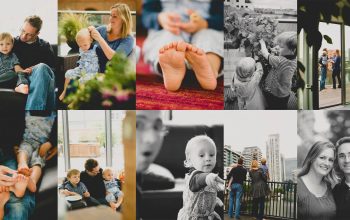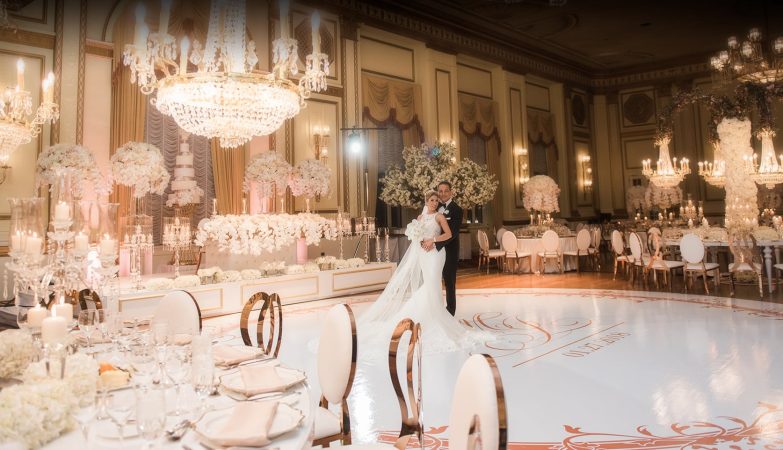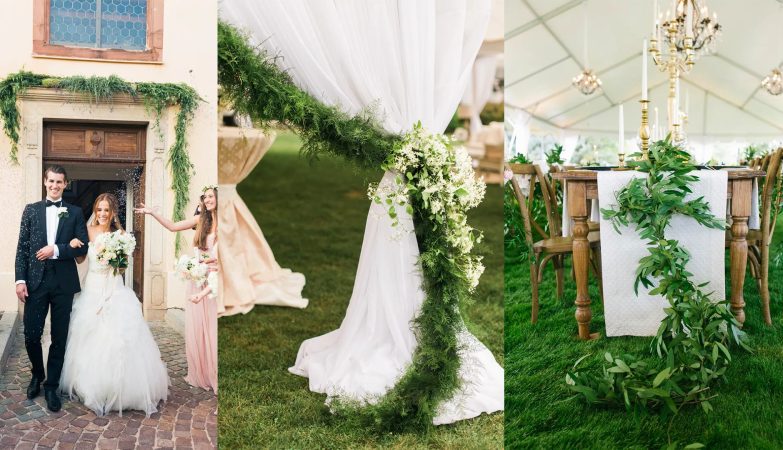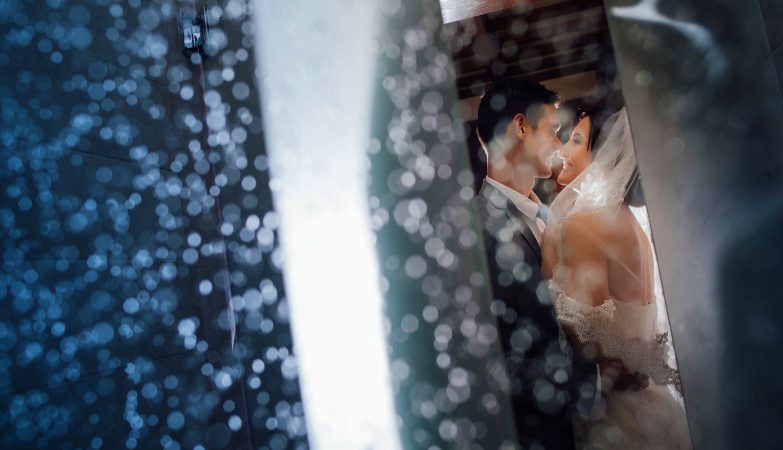
Toddlers are endless bundles of energy. This makes toddler photography about as easy as photographing the Looney Toon’s Tasmanian Devil. Photographing moving objects is always tough to tackle. Add in a dash of unpredictability, mood swings, and a bit of oh-so-sweet defiance and the task seems impossible.
Toddler years are definitely one of the toughest to photograph. However, pint-sized toddlers have some adorable antics that parents want to remember. With a few toddler photography tips -and a whole lot of patience – you can capture great photos of the toddler years.
Be Prepared
Getting a great photograph of a toddler starts with the prep work. If you are photographing a client and not your own child, that starts with getting to know the subject. Ask his or her parents what the toddler likes and dislikes. Ask which time of the day the toddler is usually happiest.
Prepare to bring a few fun props to pull out if needed, like bubbles, puppets, or a noise-maker. Choose a location that allows for room to explore. But you may want to avoid a spot where the toddler can see the playground equipment. Unless you actually want to take pictures on the playground.
If you are photographing your own children, then you start with an advantage. Think about all the things that make your toddler laugh and keep those in mind as you plan for the photos.
Keep Your Options Open
Avoid going into any photo session with a toddler with an exact picture in your mind. While it’s great to have a plan ahead of time, photographers need to be flexible and patient when working with toddlers. If the plan you had isn’t working, adapt the shot to what the toddler wants to do. Go into the session with a few ideas, but be willing to stray from those original concepts.
Avoid Photographing A Tired, Hungry Toddler
Everyone tends to get cranky when they are tired and hungry, and all emotions feel much bigger when you are a small person. For a much smoother photo session, avoid taking photos when the toddler is due for a nap, or too close to bedtime. If the toddler is always cranky in the evening, schedule the photos for the morning. The golden hour may offer great light, but great smiles are more important.
Along the same lines, make sure the toddler isn’t hungry. Have the parent bring along a snack – one that’s not messy – and if the toddler starts to get cranky, take a snack break.
Shoot From A Toddler-Friendly Height
Toddlers see the world differently with their small stature. Therefore, photographing them on their eye level helps capture a bit of how they see the world. Instead of photographing the toddler standing, kneel, or sit, so that you are level with his or her eyes. This creates a more intimate portrait and leads to less distortion.
However, this isn’t a hard and fast rule to follow 100% of the time. Shooting all your photos from the same perspective will make everything feel similar. Having the toddler sit and look up at the camera tends to brighten their eyes because their face is turned more towards the light. Photographing them from your eye level will also make them look smaller and add some variety into the session.
Use A Fast Shutter Speed
Toddler photography has more in common with sports photography than portrait photography. Most toddlers are on the go all the time, so be sure to use a fast shutter speed. Even when the toddler is staying seated, he or she might turn or move the hands quickly.
Use a shutter speed of at least 1/250 if possible. A wide aperture can help you reach those quick shutter speeds in limited lighting. It can also blur the background for a more traditional portrait look. Continuous autofocus mode and burst mode are also musts for photographing toddlers.
Choose A Location In The Shade
A golden hour photoshoot can often interfere with bedtime, and you wind up with a grumpy child. Working in the shade or outdoors on a cloudy day will help you follow the child’s antics. This way, you won’t have to worry if changing positions creates bad lighting. Shady or cloudy conditions are also easier for beginners or parents to work in.
When Shooting Indoors, Set Up By A Window
Outdoor portraits aren’t always an option, but that doesn’t mean you have no control over the light. Indoors, set up by a large window to allow for the most light. Position the child so that their side or face is towards the window. If you are photographing the child lying down, avoid having the window light coming at their feet. With window light, you may need to turn the shutter speed down to 1/100, but be sure to use burst mode to take several shots and check for the blur on the LCD screen.
Enlist Help To Get The Best Smiles}
If you are photographing your own children, your face will be tucked behind a camera, which is not the best spot to be in to elicit a smile. Enlist the help of someone the toddler enjoys being around. Have this person do goofy things behind or right next to the camera. You’ll both get smiles and up the odds that the toddler will actually be looking at the camera for a few shots.
When photographing a client, I often ask a parent to stand by me and talk, sing, or do goofy things to get those smiles. With my own kids, I often get the best smiles when asking grandma to come and help.
Keep The Session Moving
Toddlers have short attention spans and are often pretty short on patience. Keep the photo session flowing. Move quickly to the next pose or the next idea. Avoid taking too many photos in one spot, or you won’t have the time to try any other ideas before the toddler’s patience for photos wears out.
Follow The Toddler’s Lead
Some of the best toddler photographs that I’ve taken have come from simply letting the toddler do what the toddler wants to do. If a toddler wants to run around, asking the child to sit won’t create those big grins. Turn on your camera’s burst mode, turn the shutter speed even higher, make sure the camera is in continuous autofocus, and photograph the toddler running towards you.
Take what the toddler wants to do and brainstorm ways to make whatever that is more photogenic. For example, you can move the toddler to a better location. Or, use that preference to inspire another idea. For example, a running toddler may just want to move – you can ask if he wants to jump instead.
Use Active ‘Poses’
Posing is a sport of misnomer when it comes to toddlers – you can’t ask a toddler to hold his or her hands in a position. But, you can create some scenarios that tend to lead to good poses. We generated a list of different posing ideas for kids that don’t like to sit still. Use ideas like these to keep the toddler happy while also getting great shots. Toddlers may not quite understand what you are asking of them, even with more fun poses. So don’t be afraid to show them yourself what you want them to do.
Work With Fun Props
Props can be a big help when working with toddlers. A noise-maker by the camera, for example, can get them to look towards the camera. Favorite toys sometimes help during photo sessions too. Bubbles are great and tend to photograph well, along with props like balloons (just be sure the toddler can’t bite the balloon!). Giving the toddler a prop to hold can also help keep his or her hands still.
Props can also help keep active toddlers still. A toddler who is sitting in a bucket or basket, of course, isn’t running everywhere. Just make sure the prop is safe and that the toddler won’t be injured trying to get out.
COMMON TODDLER PHOTOGRAPHY QUESTIONS
How Do You Photograph Toddlers Indoors?
Indoors, capturing a sharp photograph of a child that’s always moving is tough. If possible, move the toddler towards a large window for better light. If not, use a high ISO setting and a wide (i.e. low number) aperture. Try one of the posing ideas below that keeps the youngster (relatively) still, like tip five or six.
How Do You Photograph A One-Year-Old?
One is a difficult age to photograph. But the same toddler photography tips below work for one-year-olds too, as well as babies that are already mobile. Work with the one-year-old’s antics, not against them. Be patient, and use the camera settings that you’d use to photograph sports, not a portrait. Keep in mind that you may not get traditional poses looking at the camera, but it cannot get any more authentic than a real smile.
How Do I Get My Toddler To Cooperate?
Bribery. Just kidding. The best way to get a toddler to cooperate for pictures is to work with their antics. Forcing a toddler that wants to run to sit still won’t result in smiles. If you are getting photos done by a professional, choose someone accustomed to working with toddlers. Bringing snacks or a favorite toy along can help. Make sure, though, to avoid scheduling photos right at nap time or bedtime. Use your knowledge of what your child likes and dislikes to help make the photos go as smoothly as possible.
If you are the one taking the photos, read on for more toddler photography tips that will help get your little one to cooperate for photos.
Conclusion
Even with all the best toddler photography tips, every photo session requires patience and flexibility. Toddlers may not be easy to work with, but that mischief is also what can help create fun, unexpected photographs. With enough patience and tricks, you can capture great photographs of even the most active toddlers.
originally posted on expertphotography.com by Hillary Grigonis






